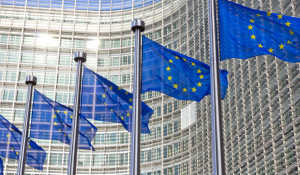The Network and Information Systems (NIS) Directive of 2016 was the European Union’s first effort at establishing cybersecurity benchmarks for key infrastructure sectors. In 2023, it was updated to the NIS2 Directive, which was designed to address shortcomings identified in the original directive.
The NIS2 Directive Explained
The NIS2 Directive imposes strict requirements on key industrial sectors with the intent of (1) enhancing the resilience of critical infrastructure and essential services against cyber threats and (2) promoting effective incident response and cybersecurity cooperation among EU member states.
Sectors covered under the NIS2 directive include:
- Energy (electricity, oil, gas, district heating, and hydrogen)
- Transportation (air, rail, water, and road)
- Healthcare (including labs and research on medical devices and pharmaceuticals)
- Waste management
- Postal and courier services
- Digital infrastructure (Telecommunications, DNS, TLD, data centers, cloud services, trust services)
- Digital services (search engines, online markets, social networks)
- Manufacturing (specifically, but not limited to, medical, transport equipment, and computer)
- Food (production, processing, and distribution)
- Chemicals (production and distribution)
- Space
Compliance with NIS2 is crucial for companies to maintain operational integrity, protect customer data, and ensure business continuity in the face of evolving cybersecurity threats.
While the directive applies to the EU market, its implications have international reach. Non-EU companies, including suppliers working with EU companies, must still comply with NIS2 to do business in EU member states.
As a result, the directive also helps enhance the global response to cybersecurity threats by facilitating information sharing and encouraging the adoption of international cybersecurity standards and best practices to build a more robust global framework.
NIS2 Directive Requirements
To achieve compliance, organizations operating within the EU must adhere to a comprehensive set of requirements outlined in the directive designed to manage and mitigate cybersecurity risks effectively. These requirements include:
Risk management measures: Entities must implement appropriate technical and organizational measures to manage cybersecurity risks, including incident prevention, detection, and response.
Incident reporting: Under the NIS2 Directive, organizations must report significant cybersecurity incidents to their national authorities within a specified timeframe (usually 24 hours) and provide a detailed report within 72 hours.
Supply chain security: Businesses must assess and manage cybersecurity risks related to their supply chains, ensuring suppliers comply with relevant security requirements.
Security policies and documentation: Organizations must establish, maintain, and regularly review security policies and documentation related to their cybersecurity measures.
Cooperation and information sharing: Entities must participate in information-sharing initiatives and collaborate with national authorities and other stakeholders on cybersecurity threats and incidents.
Governance and accountability: Senior management must be involved in the governance of cybersecurity, ensuring clear responsibilities and accountability at all organizational levels.
Training and awareness: Organizations must provide training and awareness programs for their employees to ensure they understand cybersecurity risks and best practices.
Resilience and recovery: Entities should implement measures to ensure resilience against cyber incidents and establish plans for recovery in the event of a security breach.
Compliance and auditing: Under the NIS2 Directive, organizations must undergo regular assessments and audits to evaluate their compliance with the NIS2 requirements and their overall cybersecurity posture.
What Happens to Organizations That Fail to Comply With the NIS2 Directive?
Failure to comply with the NIS2 directive can have severe consequences for organizations, depending on the level of non-compliance. Potential outcomes include:
- Fines and penalties, including daily penalties until compliance is achieved.
- Increased oversight and monitoring, including more frequent and detailed inspections and/or reports on cybersecurity measures and incidents.
- Operational restrictions, including the suspension of operations until compliance is achieved or the revocation of operating licenses.
- Reputational damage if non-compliance is publicly disclosed.
- Legal consequences, including litigation and the seeking of damages from affected parties (particularly if non-compliance results in a security breach).
- Operational disruption as a result of cybersecurity incidents occurring from non-compliance. (Non-compliance can also affect relationships with suppliers and partners—especially if they require proof of NIS2 compliance— leading to knock-on impacts in the supply chain.)
- Loss of competitive advantage and reduced market share as customers move to competitors with better cybersecurity practices.
NIS2 Directive Compliance Tips for Product Security Teams
Achieving compliance with the NIS2 Directive can seem daunting, but here are some practical tips to guide your product security teams.
- Conduct a gap analysis: Assess your current cybersecurity practices against NIS2 requirements. Identify areas for improvement and prioritize actions accordingly.
- Integrate security into the development lifecycle: Adopt a security-first mindset in your product development process. Implement secure coding practices, regular security testing, and incorporate feedback loops to address vulnerabilities promptly.
- Establish clear communication channels: Facilitate open communication between product teams, security personnel, and management to ensure everyone is aligned on security objectives and compliance efforts.
- Regularly update policies and training: Cyber threats evolve rapidly, so updating your security policies and training programs regularly is essential. Keep your teams informed about the latest threats and compliance requirements.
- Utilize automated tools: Leverage automated security tools, like Finite State, to assist in vulnerability scanning, incident response, and security monitoring to streamline compliance processes, save time, and reduce human errors.
- Engage with legal and compliance teams: Collaborate closely with legal and compliance teams to ensure that your security practices align with NIS2 requirements and other relevant regulations.
How Finite State Helps Teams Comply with the NIS2 Directive
Finite State offers a comprehensive solution to support compliance with the NIS2 Directive. Here’s how Finite State can assist your teams:
- Enforcing Secure Coding Practices: Seamless integrations into existing CI/CD pipelines automatically analyze source code and compiled binaries for common security vulnerabilities and coding errors. This allows engineers to identify vulnerabilities hidden deep within legacy code and third-party libraries and detect and address issues early in the development process.
- Real-Time Threat Detection: Integrations with vulnerability databases provide up-to-date information on the latest threats and exploits, allowing for the proactive identification of potential risks before they can be exploited.
- Automate Vulnerability Identification: Using our advanced binary and source code SCA, vulnerabilities can be identified as they’re introduced across the SDLC to help teams keep applications secure.
- Comprehensive SBOM Solutions: Automatically generate Software Bill of Materials throughout the SDLC and easily compile detailed information on all components in your products, including open-source libraries, third-party dependencies, and custom code to improve transparency and identify potential security risks in your software supply chain.
Conclusion
The NIS2 Directive represents a critical evolution in the European Union’s approach to cybersecurity, addressing the limitations of the original 2016 directive and setting more stringent requirements for key infrastructure sectors.
Achieving compliance with NIS2 is about meeting regulatory obligations and protecting your organization’s operational integrity, data security, and business continuity. Failure to comply can result in severe consequences, including fines, increased oversight, operational restrictions, reputational damage, and legal liabilities. As cyber threats evolve, adhering to these comprehensive requirements will ensure your organization is better prepared to prevent, detect, and respond to incidents, thereby contributing to a more secure and resilient digital landscape, both within the EU and globally.
Strong cybersecurity requires a collective effort. Talk to the team today to discover how Finite State can help you comply with the NIS2 Directive.
Subscribe to Our Blog
Get the latest posts delivered straight to your inbox weekly.
Share this
You May Also Like
These Related Stories

Navigating the EU Cyber Resilience Act: Essential Insights for Product Security Teams

How IoT Security Challenges Impact Regulatory Compliance



